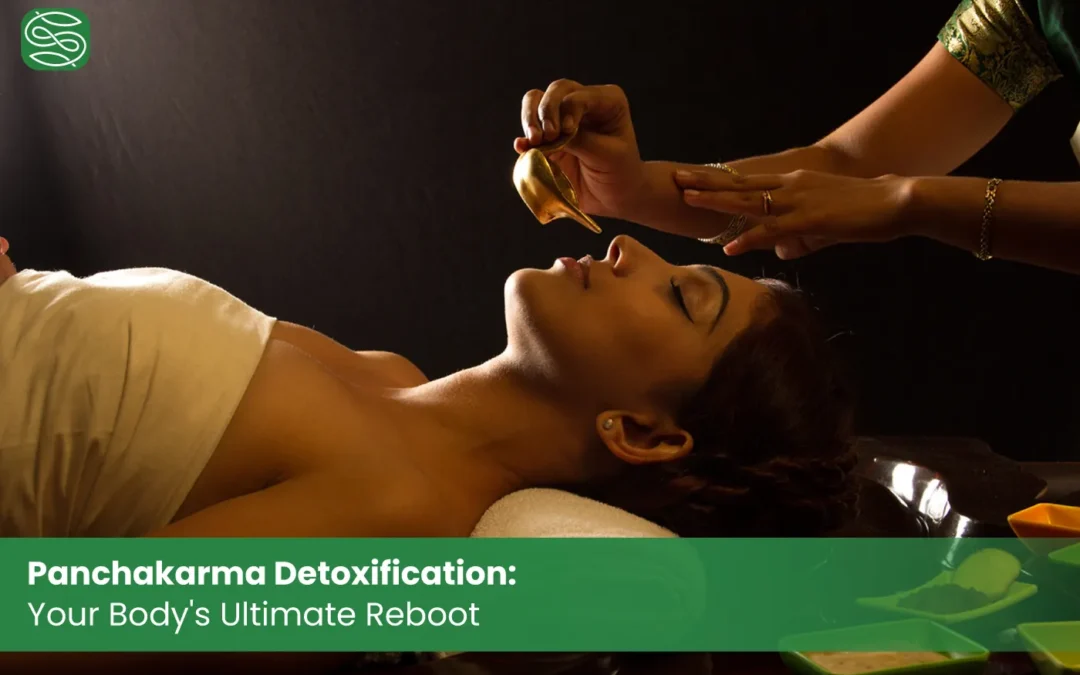Introduction:
Ravi was a high-performing executive, running on back-to-back meetings, late-night flights, and endless deadlines. But slowly, his energy waned, his digestion turned erratic, and sleep became shallow and restless. He brushed it off as the cost of ambition — until his body forced him to pause.
Burnout for Ravi wasn’t psychological; it was physical.
Ravi didn’t need a vacation. He needed a reset. At the urging of a friend, he turned to Panchakarma, not as a luxury spa retreat, but as a deeply rooted Ayurvedic cleanse. This wasn’t about escaping chaos; it was about restoring harmony from within.
Through gentle detoxification, precise treatments, and intentional rest, Ravi experienced something far more profound than relaxation; he rediscovered balance. His digestion stabilised. Sleep deepened. Energy returned, not in frantic bursts, but in a steady, sustainable rhythm.
Is your body craving a reset?
Let’s explore how Panchakarma, with its timeless principles, can help high-achievers reclaim clarity, vitality, and calm.
What’s Panchakarma Detoxification?
The word “Panchakarma” comes from Sanskrit’ Pancha’ means five, and Karma means action. Together, they relate to the five primary remedial treatments designed to remove toxins, restore dosha balance ( Vata, Pitta, and Kapha), and revitalize the body’s internal systems.
These five remedial procedures include
- Vamana – Therapeutic purgation to eliminate excess Kapha.
- Virechana – Purgation to cleanse Pitta-related toxins from the intestines.
- Basti – Medicated enemas for Vata-related imbalances.
- Nasya – Nasal therapy to clear accumulated toxins in the head and neck region.
- Raktamokshana – Controlled bloodletting for purification of blood.
These therapies are personalized according to an individual’s body type, imbalances, and current health condition, making Panchakarma detoxification a deeply customized healing journey.
The Three Phases of Panchakarma Detoxification
Panchakarma Detoxification is not a one-day treatment; it’s a structured program with three distinct yet interconnected phases:
1. Pre Phase( Purva Karma)
It is the medication stage. Before detoxification, the body is conditioned to release deep-seated toxins.
Oleation ( Snehana) is the process of internally and externally medicated oils to loosen poisons bedded in the napkins.
-
- Fomentation (Swedana): Therapeutic sweating to mobilize toxins toward the digestive tract for elimination.
- Diet & Lifestyle Adjustment: Individuals follow a lighter diet and personalized daily routine to support detox readiness.
This phase ensures that the body is receptive and responsive when the detox procedures begin.
2. Main Phase (Pradhan Karma)
The core cleansing phase involves one or more of the five treatments being carried out under expert supervision. Grounded on the assessment, the applicable treatments are chosen to flush out toxins using the body’s natural elimination pathways.
This phase needs rest, a calm internal state, and a supportive environment. The procedures use natural medicines, oils, and treatments specified in Ayurvedic texts, personalized to each individual’s constitution.
3. Post Phase ( Paschat Karma)
After detoxification, the body is in a sensitive and open state. This recovery phase is just as important as the detox itself.
Diet Progression: It begins with rice and gradually progresses to semi-solid and solid foods to improve digestion.
Lifestyle Guidance: Specific practices, such as yoga, contemplation or meditation, and herbal supplements help maintain these benefits.
Emotional Calmness: The mind is frequently clearer, and this phase allows for reflection and stabilization.
Benefits of Panchakarma Detoxification
- Supports Preventive Health
Regular treatments can help reduce the buildup of toxins, which is often the root cause of many chronic conditions. As recommended in ayurveda, seasonal detoxification helps maintain internal balance and supports long-term heartiness. - Strengthens Metabolism
Restoring the digestive fire(Agni) is one of the central treatments of Panchakarma. A strong Agni improves digestion, immersion, and elimination, forming the foundation for better health. - Improves Mental Clarity
Mental fog and emotional heaviness are common issues of ultramodern stress. It clears these blockages, perfecting focus, memory, and emotional adaptability. - Boosts impunity
The system functions more effectively when the body is free of toxins, and the doshas are in balance. It strengthens the body’s ability to fend off seasonal illnesses and chronic inflammation. - Promotes Reproductive Health
To improve fertility, ayurveda highlights detoxification’s great value. It prepares the body to accept an embryo and promotes good pregnancies by cleaning physical and energetic passageways. - Helps to rejuvenate
Panchakarma Detoxification nourishes as well as cleans. Basti and Abhyanga nourish tissues (dhatus), improve vitality (ojas), and help slow aging. - Assists with the management of chronic diseases.
Commonly arising deep-rooted imbalances are the causes of ailments including arthritis, asthma, psoriasis, acidity, and headaches. Panchakarma detoxification provides a root-level therapy for such ailments and helps to restore systemic equilibrium. - Enhances sensory and emotional well-being
Specific therapies, including Nasya (for the nasal tract), Gandusha (for oral cleaning), and Tarpana (for vision), are designed to cleanse and enhance the senses, sharpening perception and calming the mind.
The significance of Panchakarma Detoxification Now
Though rooted in ancient wisdom, Panchakarma detoxification feels more relevant than ever in today’s fast-paced world. With extended hours in front of screens, irregular sleep, processed foods, and constant stress becoming the norm, our bodies silently bear the burden. While modern medicine excels at treating acute issues, it offers a deeper, preventive approach focusing on long-term balance and rejuvenation.
Unlike quick fixes that mask symptoms, panchakarma detoxification addresses the root causes. It restores health naturally, without chemical intervention, allowing the body to heal, reset, and thrive.
Conclusion:
Panchakarma Detoxification at Shathayu Retreat is more than a treatment; it’s a customized path toward balance, clarity, and rejuvenation. Based on fundamental Ayurvedic ideas, our programs, guided by experts who know your particular constitution, combine deep detox with mild revitalization. Whether you want to replenish energy, sharpen focus, or reconnect with your inner well-being, Panchakarma at Shathayu supports you in calming, therapeutic surroundings to realign with your body’s rhythm. At Shathayu Retreat, you can begin your metamorphosis with the help of Ayurveda care. Ready to start your journey to renewal? Contact Shathayu Retreat today and let ayurveda guide you back to balance.
FAQs:
What is Panchakarma Exactly?
From the inside out, it is a traditional Ayurvedic detoxification process that includes five main therapies meant to eliminate poisons, balance the doshas (Vata, Pitta, Kapha), and revitalize the body.
Is Panchakarma detoxification only for individuals with health problems?
Not at all. It is both preventive and therapeutic. Healthy individuals can benefit from seasonal detox to maintain balance, boost immunity, and enhance overall vitality.
How long is this program?
Depending on the individual's body constitution, health condition, and objectives, a standard treatment runs from 7 to 21 days. Pre-cleanse, primary treatments, and after-care phases are included.
During detoxification, will I adhere to a tight diet?
Indeed, part of the process is a simplified and easily digestible diet. It helps with toxin elimination and raises your digestive power (Agni). Your meals will be healthful, herbal, and tailored to fit your body type.
Is this treatment secure?
Performed by seasoned Ayurvedic specialists, It is incredibly safe. After an exhaustive discussion, every treatment is adapted to your health condition and needs.

